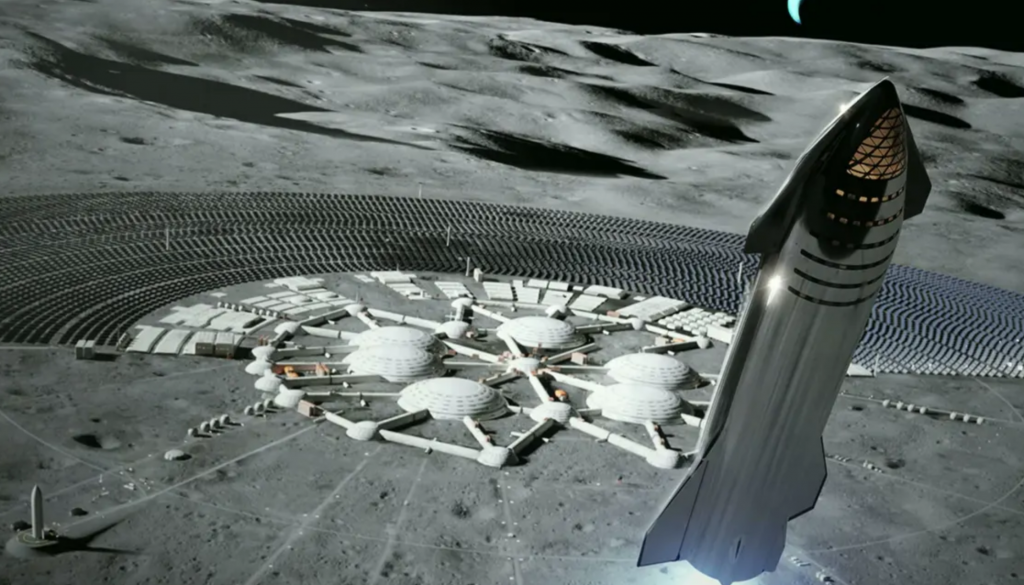
Graphical illustration of SpaceX’s Starship Mk1 near a Mars colony.
SpaceX to Test Stainless Steel Mars Rocket ‘Starship Mk1’
Introducing the Starship Mk1. SpaceX CEO Elon Musk unveiled their latest design for a ship to travel to Mars last week.
It stand at 165 feet tall, and is powered by 6 Raptor engines on the passenger payload and 37 Raptor engines for the booster module, which lands itself. According to theverge.com, the prototype will use its engines to fly to a high altitude and then lower itself back down, performing what’s known as a propulsive landing — the same technique SpaceX uses to land its already operating rockets.
“This thing is going to take off, fly to 65,000 feet — about 20 kilometers — and come back and land in about one to two months,” Musk said last Tuesday, referring to the stainless steel prototype behind him.
SpaceX built the Starship MK1 prototype rocket out of “301 stainless steel,” a lightweight, expensive carbon fiber composite material, which gets stronger as temperatures drop. Musk described the material as the key to making the rocket light enough to carry humans to the moon and to Mars. That’s the plan he first mentioned in 2016.
Musk’s ultimate goal is to build technology capable of sending crews of around 100 people to Mars, to build a self-sustaining city, suggesting that “Mars could help Earth one day.”
In a Twitter video on Tuesday, Musk shared a 10-second clip of the inside of the prototype Starship.
This is the rocket that will launch the billionaire Japanese entrepreneur Yusaku Maezawa and a handful of artists on a trip around the moon in the 2020s. SpaceX unveiled that planned space tourist trip last year (but did not disclose how much Maezawa paid) according to a space.com story.
Musk made several changes in 2017 on the vehicle he want to take to Mars. He called it the Big Falcon Rocket back then, or BFR. It was first designed to stand 348 feet tall. Then in 2018, SpaceX announced more changes.
SpaceX may try to fit more people into the ship for inter-Earth flights, where the Starship could zip passengers between New York and Paris in just 30 minutes. These no-frills, short flights could hold 1,000 people by confining passengers their seats and ditching extras like toilets and food areas.
Microsoft announced in the summer of 2019 that it would be investing $1 billion in Elon Musk’s OpenAI to build artificial intelligence that can tackle more complex tasks.
Through the partnership, the companies will build new Azure AI supercomputing technologies and Microsoft will become OpenAI’s exclusive cloud provider, according to the announcements.
So with the Microsoft funding the AI to run it all, and the huge amount of money saved on materials, expect Musk to be selling round-trip tickets to the moon, or maybe even Mars, in a matter of a few years.
read more at space.com







Leave A Comment